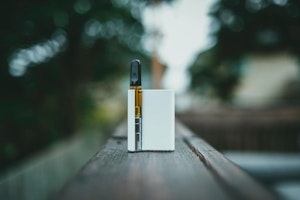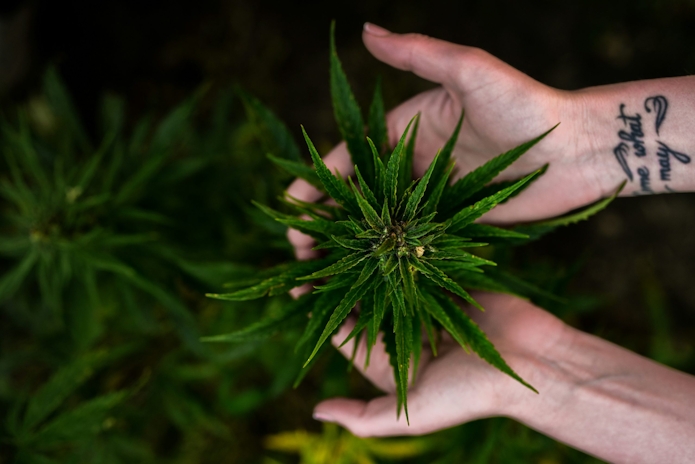
Davide Ragusa / Unsplash
What Is Sativa? A Beginner’s Guide to the Energizing Cannabis Type
Are sativa strains all but a marketing gimmick?
When most people ask, “What is sativa?” they’re usually talking about cannabis strains sold as “uplifting” or “daytime-friendly.” But that label doesn’t tell the whole story.
Sativa originated as a botanical classification, but over time, it has become marketing shorthand. Today, calling a product “sativa” usually refers to the type of experience it’s supposed to create, not necessarily its genetic background.
Before you shop for a sativa product, it’s worth knowing what the term actually means (and what it doesn’t).
Understanding Sativa: What It Is and Where It Comes From
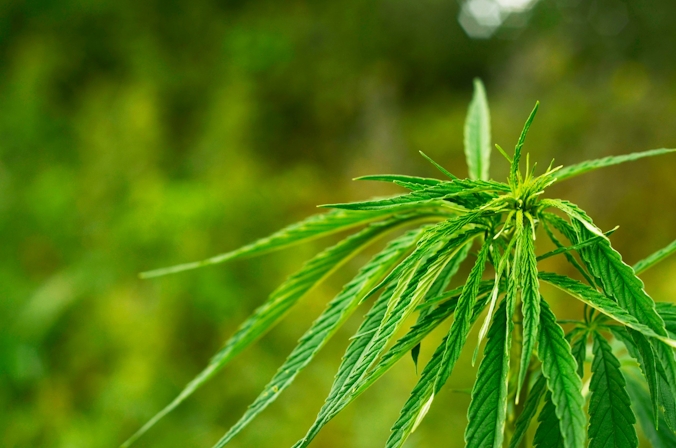
Herbadea
In botanical terms, sativa means “cultivated.” The name Cannabis sativa was originally used to describe domesticated cannabis grown for fiber, seeds, or traditional medicinal use.
The cannabis you’ll find in dispensaries today usually falls into two primary cultivated types:
- Cannabis sativa subsp. indica var. indica – Known as Narrow-Leaf Drug (NLD) cannabis. This is the plant most people refer to as “sativa.”
- Cannabis sativa subsp. indica var. afghanica – Known as Broad-Leaf Drug (BLD) cannabis. This is the plant usually labeled “indica.”
Most modern strains are hybrids of NLD and BLD varieties, so when you see the word “sativa,” it’s usually describing the plant’s appearance or the effects it’s expected to have, not a pure genetic lineage.
Typical Sativa Plant Traits

Shane Rounce / Unsplash
Cannabis strains labeled sativa tend to come from plants with tall, slender growth and long, narrow leaves. These plants have been bred over generations, not only for their specific kind of high, but also for cultivation traits such as size, flowering time, and regional adaptability.
- Tall and slender growth
- Long, narrow leaves
- Lighter green color
- Adapted to warmer, longer growing seasons
Long before sativa became dispensary slang for “daytime weed,” it had a place in human history as a multipurpose plant. Narrow-leaf cannabis has been cultivated for thousands of years for textiles, food, and medicine across parts of Asia, Africa, and Central America. In some regions, it was also used ceremonially or therapeutically, long before it was marketed as “uplifting.”
Are All Sativa Strains Energizing?

Smoke Honest
Not necessarily. Many people assume sativa strains give you energy, but the effects depend on the specific cannabinoid and terpene profile, not just the label. Some sativa strains feel uplifting, but others may cause overstimulation or even fatigue, depending on how your body reacts.
For more information on energizing sativa strains, check out our guide on The Best Sativa Strains For Energy.
How Sativa Affects Your Mind and Body
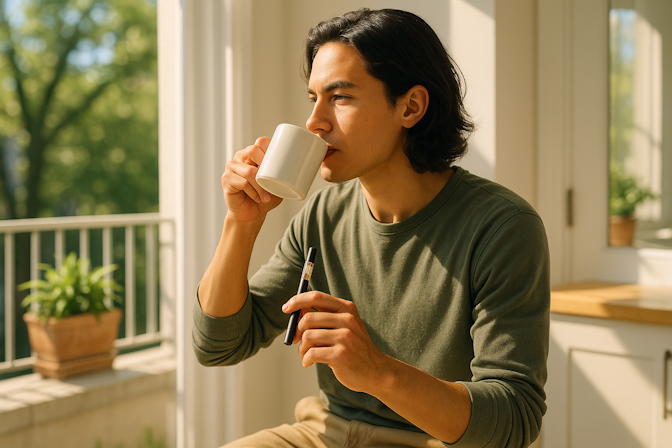
Herb
Sativa products are often marketed as energizing or creativity-boosting, but the effects of sativa aren’t universal. For some, a sativa strain can sharpen focus or increase sensory awareness. For others, especially at higher doses, it can trigger racing thoughts or restlessness.
How sativa weed affects you depends on the product’s THC content, cannabis terpene profile, and your personal body chemistry. Common effects people report include:
- Mental stimulation
- Enhanced sensory perception
- Elevated mood
- Faster heart rate
- Possible anxiety or overstimulation if you’re sensitive to THC
Consumption Method Matters
The effects of sativa gummies aren’t always the same as smoking flower or using a vape. Edibles take longer to kick in and tend to last longer, which may intensify both the desired and undesired effects.
Vaping or smoking sativa flower usually delivers a faster onset with a shorter duration. Inhalation allows for more immediate feedback, which some people prefer if they’re trying to avoid overdoing it.
How you choose to consume makes a difference, not just in how you feel, but also in how long the effects last. Flower or vape highs may peak within an hour or two, while edibles can stick around for four to six hours (sometimes longer, depending on dose).
Common Sativa Product Types:
- Flower: Fast onset, flexible dosing, classic consumption method
- Vapes: Discreet, portable, fast-acting
- Concentrates (dabs): Potent and immediate, but not ideal for new consumers
- Edibles: Slow onset, longer-lasting, often feel more “body heavy”
- Beverages: Similar to edibles, but some nano-emulsified drinks kick in faster
If you’re wondering, is sativa an upper or a downer? Most people would call it an upper, but not everyone experiences it that way. Some report feeling energized, while others end up drained, especially if they overshoot their dose or choose the wrong product type for the situation.
Sativa vs. Indica: How to Choose

Elsa Olofsson / Unsplash
The sativa vs. indica split has been part of cannabis culture for decades, but what the difference between sativa and indica really comes down to is consumer expectations, not strict plant science.
Most people reach for sativa products when they need something to boost focus, creativity, or social engagement. Indica strains are typically chosen for relaxation, stress relief, or sleep support.
These categories serve as rough guidelines, not guarantees. The way a product actually affects you depends on the cannabinoids and terpenes present, as well as how your body responds to them.
If you’re trying to stay productive or spark creative thinking, a sativa-leaning strain might work best. If your goal is deep relaxation or pain relief, you’ll likely lean toward indica-dominant products. And if you’re asking, “What is stronger, sativa or indica?” the answer depends on THC levels, terpene content, and how much you consume, not just the label.
Curious about which sativa strains are worth checking out in 2025? Read the Herb guide on The 10 Best Sativa Strains 2025 Has to Offer.
Sativa and Lifestyle: When to Use It
Some consumers use sativa in small doses, also known as microdosing, to support focus during work or creative projects. Taking very small amounts of sativa strains may help reduce stress or boost attention without the full psychoactive intensity. Others lean on sativa for social situations, where mood elevation or talkativeness can make conversation flow more easily.
That said, sativa isn’t right for every setting. It’s usually not the best choice right before bed, and it might not work well for people prone to anxiety. The key is knowing your cannabis tolerance and paying attention to how different strains affect you personally.
FAQs
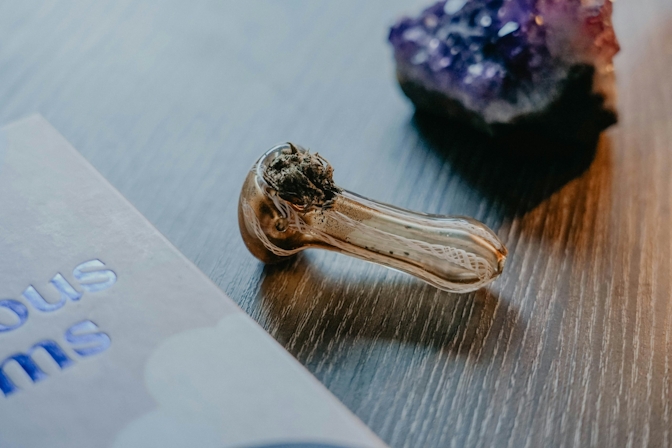
Elsa Olofsson / Unsplash
Does sativa weed make you anxious?
It can for some people, especially if the strain is high in THC and low in CBD. If you’re prone to anxiety, start low and look for strains with calming, beneficial terpenes like linalool or beta-caryophyllene.
Does sativa weed ever make you tired?
Yes. Not all sativa strains give you energy. Some may cause mental overstimulation, which can eventually lead to fatigue, especially if you take too much.
Is sativa a body or head high?
Most people describe sativa effects as a head high, characterized by mental stimulation, mood shifts, and enhanced creative thinking. Some strains can still produce mild body effects depending on their cannabinoid and terpene profiles.
Does sativa help with pain?
Some sativa strains may help with pain, but it’s not guaranteed. It depends on the specific product. Strains with limonene or pinene may have anti-inflammatory potential, but many people prefer indica-leaning products for physical relief.
Does sativa always give you energy?
No. The idea that sativa always gives you energy is a common myth. Effects depend on the dose, the strain, and your personal tolerance. In some cases, sativa can lead to anxiety or burnout rather than stimulation.
Does sativa make you horny?
For some people, yes. Sativa can affect libido, but responses vary. Some report increased sensitivity and desire, while others feel too distracted or anxious for intimacy.
Herb Recommended Products:
READ MORE


